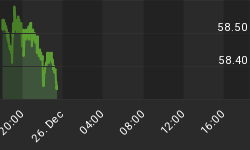As the multi-billion dollar Ponzi scheme orchestrated by Wall Street insider Bernard Madoff unravels in the media spotlight, the nation is being presented with a rare opportunity to understand the true nature of many of our most cherished financial structures. Hopefully we have the wisdom to connect the dots.
Although the $50 billion loss engineered by Madoff is truly a staggering accomplishment (and was done using old-fashioned fraud rather than the mathematical wizardry that has characterized Wall Street's recent larcenies) the size of the scheme pales in comparison to the multi-trillion dollar Ponzi structures run by the United States government. In fact, rather than looking to jail Madoff, President-elect Obama should consider making him our new Treasury Secretary. If not that, at least make him the czar of something!
Madoff's inspiration came from Charles Ponzi, the Italian-born American immigrant who promoted an investment plan in the early 1900s' that traded postal coupons. Rather than paying investors from legitimate investment returns, Ponzi hit upon the innovative idea of paying out early investors with money collected from new investors. By creating an illusion of success, interest in his investment plan ballooned. Over time the schemes have become known by many other names, such as chain letters or pyramid schemes. They are united by the fact that they always fail in the end.
When the influx of new investors inevitably slows to the point where distributions to current investors can no longer be maintained, investors look to withdraw funds. When this happens, the entire structure falls apart. The profits received by those who "invested" early as well as any funds skimmed off by the promoter, are offset by all the losses of those who came late to the party.
To a large extent, the same concept has driven the major asset bubbles of the last decade. Given the ridiculously high valuations seen by tech stocks and real estate during their respective booms, the only way the bubbles could be perpetuated was if newer "investors" could be found to pay even more outrageous prices (the greater fool). But when these new buyers balked, the whole structure crumbled. Although there was no Ponzi or Madoff to orchestrate these manias, the entire financial and economic apparatus of the country had successfully convinced the public that "investments" in tech stocks and condominiums were bullet proof and that the supply of new buyers was endless.
Unfortunately, the Ponzi economy doesn't stop there. A chain letter is no more viable when run by governments than when run by private citizens. However, government orchestrated pyramids have the advantage of required participation. As a result, they can maintain the illusion of viability for several generations. But the longer such schemes operate the larger will be the losses when they ultimately collapse.
The Social Security Administration runs its "trust funds" with precisely the same methods used by Madoff and Ponzi. As money is collected by from current workers, the funds are then dispersed to those already receiving benefits. None of the funds collected are actually invested, so no investment returns are ever generated. Those currently paying into the system are expected to receive their returns based on the "contribution" made by future workers. This is the classic definition of a Ponzi scheme. The only difference is that Ponzi didn't own a printing press.
The United States Government runs its own balance sheet based on the Ponzi principal as well. Our national debt always grows and never shrinks. As existing debt matures, proceeds are repaid by issuing new debt. Interest payments on existing debt are also made by selling new debt to investors. The whole scheme depends on an ever growing supply of new lenders, or the willingness of existing lenders, to continue to roll over maturing notes. Of course, as was the case with Madoff, if enough of our creditors want their money back, the music stops playing.
In Madoff's case, the rug pulling was provided by the huge financial losses suffered by some of his clients in other non-Madoff investments. When enough of these clients looked to sell some of their apparently well-performing Madoff assets to help offset such losses, the scam collapsed. The same thing could befall the United States Government. Now that China and our other creditors are looking to spend some of their U.S. Treasury holdings to stimulate their own economies, look for a similar outcome with even more dire implications.
The main difference is that while Madoff took elaborate steps to conceal his scheme, the U.S. government operates in broad daylight. It truly is amazing how faith in government is so pervasive that many can believe that politicians will succeed where private individuals fail, and that governments are somehow immune to the economic laws that govern the rest of society. Like those unfortunate to have been duped by Madoff and Ponzi, the world is in for a rude awakening.
For a more in depth analysis of our financial problems and the inherent dangers they pose for the U.S. economy and U.S. dollar, read my just released book "The Little Book of Bull Moves in Bear Markets." Click here to order your copy now.
For an updated look at my investment strategy order a copy of my new book "Crash Proof: How to Profit from the Coming Economic Collapse." Click here to order a copy today.
More importantly, don't wait for reality to set in. Protect your wealth and preserve your purchasing power before it's too late. Discover the best way to buy gold at www.goldyoucanfold.com. Download my free Special Report, "The Powerful Case for Investing in Foreign Securities" at www.researchreportone.com. Subscribe to my free, on-line investment newsletter, "The Global Investor" at http://www.europac.net/newsletter/newsletter.asp.















